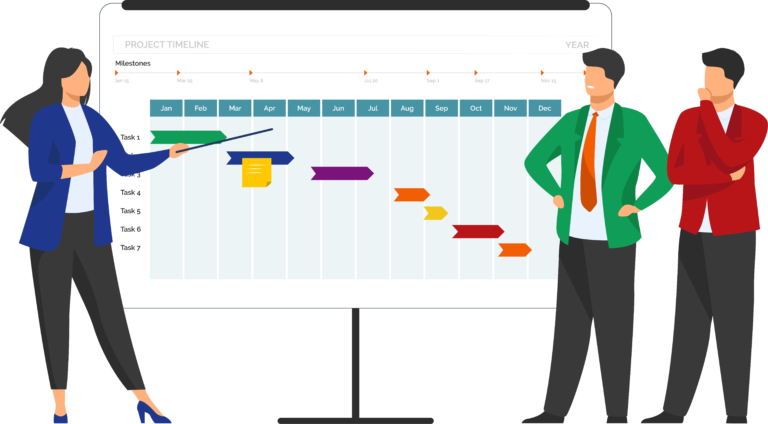
Expert Commentary by Caleb Uzuegbunam, Head of Design at AnswerGrid, Inc
In corporate America’s hallways, the same scenario is acted out in dozens of boardrooms: executives poring over product roadmaps that are filled with features, launch timelines, and technical specifications as they struggle to connect these projects to meaningful business outcomes. Caleb Uzuegbunam, Design Head at AnswerGrid, Inc and a seasoned product designer with work experience in AI platforms, e-commerce infrastructure, and GTM strategy, believes this mismatch is perhaps the biggest challenge businesses of today must tackle. Drawing on his extensive experience leading design teams at companies like GoPuff, Kit (formerly ConvertKit), and Propel, our author argues that the traditional “feature factory” approach to product development has led to a fundamental misalignment of what companies create and what actually generates long-term value.
The Output Trap
Uzuegbunam’s perspective on the feature factory phenomenon comes from his own experience making product decisions in a range of industries and company sizes. With background in high-growth startups as well as large, mature companies, he observes that organizations fall into a predictable pattern: success is measured in output metrics, features released, story points completed, sprint velocity, rather than outcome metrics that reflect real user and business value.
“The feature factory mindset emerges from good intentions,” Caleb explains, “but it essentially has the dynamic between activity and progress flipped.” His work at GoPuff, where he assisted in building e-commerce fulfillment workflows that unlocked an additional million dollars more in annual revenue, illustrates this tension. The innovation wasn’t facilitated through delivering more features faster, but through deep understanding of the customer experience pain points and building solutions that addressed core business issues.
This understanding has shaped Uzuegbunam’s product leadership approach, particularly in his current role leading product and growth at AnswerGrid, Inc . The achievement of the AI platform to facilitate consulting teams to reveal firm expertise and produce client-ready deliverables faster is a shift from feature thinking to value design. Instead of asking “What features do we need to build?” the team asks “What are our users trying to accomplish, and how do we create the most accessible path towards those outcomes?”
Design as Strategy
Throughout his professional journey, from Growth Designer at Kit to Product Design Lead at Propel and now Head of Design at AnswerGrid, Inc, Caleb has consistently been a champion of design’s role as a strategic force, rather than an add-on for cosmetics. Such an attitude reverses the common C-suite belief in design, which is that it’s primarily visual and about user interface.
Our expert’s cross-context and cross-market exposure, from his advisory function at Vizible Africa showcasing exceptional products designed by Africans, has served only to strengthen his belief that design thinking presents a unique vehicle through which to see and solve profound business issues. Design, he believes, provides a systematic method of converting abstract business problems into concrete, testable solutions that create measurable value.
This design thinking methodology is particularly powerful when applied to digital roadmapping. Instead of structuring roadmaps by feature buckets or technical requirements, Caleb encourages the use of value hypotheses to structure them. Each piece of the roadmap needs to not just declare what is going to be built, but start with why it will provide specific value to users and to the business, how that value will be measured, and how the effort connects to higher strategic objectives.
The Value Flywheel
At the heart of our expert’s approach is what he terms the “value flywheel”, a virtuous feedback cycle where each product investment generates insights and outcomes that drive and iterate upon subsequent investments. As opposed to linear product development approaches that treat each feature as a distinct deliverable, the value flywheel recognizes that long-lasting product success comes through compound returns on first-principles design decisions.
From his experience in enterprise-grade AI at AnswerGrid, Inc, Uzuegbunam demonstrates how the system operates in practice. The platform doesn’t simply add AI capability on top of existing consulting processes discretely; it constructs a flywheel whereby each interaction generates context that makes the system more effective at revealing relevant expertise, which enables more effective deliverable creation, which generates more useful data, and so forth.
This flywheel thinking fundamentally changes how organizations approach roadmap prioritization. Rather than evaluating initiatives in isolation, leaders must consider how each investment contributes to and benefits from the broader value-creation system. Features that might appear less impactful individually can become strategic priorities when viewed through their contribution to the flywheel’s momentum.
Speaking the C-Suite’s Language
Uzuegbunam’s extensive experience working with leadership teams across different organizational contexts has given him unique insights into how design thinking can reshape executive-level product conversations. The key, he argues, lies in translating design concepts into business language that resonates with C-suite priorities and concerns.
His work at GoPuff provides a compelling example of this translation process. Rather than presenting design improvements in terms of user experience enhancements or interface optimizations, Uzuegbunam and his team framed their initiatives around business impact: faster delivery times, higher customer satisfaction scores, increased order values, and ultimately, measurable P&L impact. This approach helped executives understand design not as a cost center or creative exercise, but as a strategic investment with clear returns.
This reframing becomes particularly crucial when discussing digital roadmaps with senior leadership. Traditional roadmap presentations often focus on technical specifications, development timelines, and resource requirements. Uzuegbunam advocates for roadmaps that lead with value propositions, customer outcomes, and business metrics, using design thinking to connect these high-level objectives to specific product decisions.
The Gen AI Transformation Context
Uzuegbunam’s experience at AnswerGrid, Inc, developing AI solutions for consulting firms, provides a different take on how emerging technologies amplify the opportunities and risks of feature factory thinking. AI platforms, with their rapid development times and seemingly unlimited opportunities, threaten to feature factories at a larger scale and pace; companies shipping AI capabilities without specific realization of their strategic value.
AnswerGrid, Inc WorkStreams methodology takes a different path. Rather than inventing AI capabilities merely because they are technologically possible or a competitive requirement, the team seeks to identify specific points of value creation where AI can actually improve consultant productivity. This requires a deep understanding of consulting processes, client needs, and the business model at large—insights gained through design research and user-centricity rather than technical or market savvy alone.
This AI ecosystem also reflects the importance of the value flywheel model. AI technology improves with use, creating better outputs as it gains knowledge from more and more data and interactions. Firms that align their AI roadmaps to value flywheels are able to create sustainable moats, while those who think about AI as a collection of discrete features struggle to achieve meaningful differentiation or returns on investment.
The Playbook for Leaders
Uzuegbunam’s guidance to C-suite leaders who desire to transition from feature factory to value-flywheel thinking is centered around three core strategies..
Outcome Metrics: This requires organizations to rethink base product success measurements. Instead of tracking output-oriented KPIs (features shipped or dev velocity), leaders must orient themselves toward outcome-based metrics that reflect real value creation. These might include customer lifetime value uplift, quality of engagement, or business process efficiency.
Outcome-Aligned Teams: This involves restructuring teams and processes so that value-driven decisions are encouraged. Uzuegbunam advocates for cross-functional teams organized around business outcomes rather than technical functions, with design as the glue that ties user needs, business goals, and technical possibilities together.
Test & Iterate: This underscores the need to handle roadmap items as hypotheses that need to be tested instead of requirements that must be followed. This practice, borrowed from design thinking principles, urges teams to verify assumptions early and pivot in light of real-world input instead of marching ahead regardless of evidence.
The Path Forward
The shift from feature factory to value flywheels is essential for organizations seeking sustainable competitive advantage in an increasingly complex digital world. The successful companies will be those that use design thinking to create self-reinforcing systems of value creation, where each product investment yields insights and outcomes that compound over time.
This transformation requires more than new processes or metrics; it requires a paradigm shift in organizational thinking about the relationship between design, technology, and business strategy. Design must be viewed as a strategic discipline capable of bridging the gap between business-level goals and product-level decisions, and technology must be viewed as a facilitator of designed experiences, rather than an end in itself.
For C-suite leaders willing to make this transition, Uzuegbunam prescribes a simple place to begin: begin every roadmap conversation with questions of business value and user outcomes, and use design thinking to reverse-engineer those objectives into targeted product investments. The move from needing to ask “What do we build?” asking “What results must we create, and how can we define the best means of arriving there?” is the first step into out of the feature factory and into value-flywheel thinking.
Companies that make this transition will not only meet current user needs but will also generate lasting value for stakeholders and build resilient competitive moats in an increasingly crowded market.





